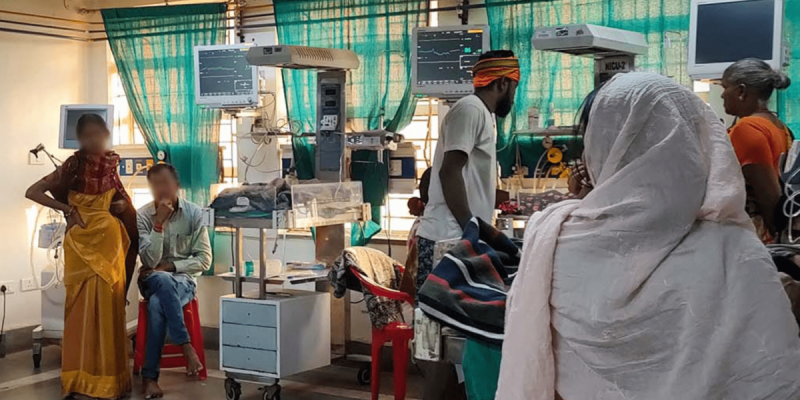- Courses
- GS Full Course 1 Year
- GS Full Course 2 Year
- GS Full Course 3 Year
- GS Full Course Till Selection
- MEP (Mains Enrichment Programme) Data, Facts
- Essay Target – 150+ Marks
- Online Program
- GS Recorded Course
- NCERT- First Ladder
- Polity
- Geography
- Economy
- Ancient, Medieval and Art & Culture AMAC
- Modern India, Post Independence & World History
- Environment
- Governance
- Science & Technology
- International Relations and Internal Security
- Disaster Management
- Ethics
- Current Affairs
- Indian Society and Social Issue
- CSAT
- 5 LAYERED ARJUNA Mentorship
- Public Administration Optional
- ABOUT US
- OUR TOPPERS
- TEST SERIES
- FREE STUDY MATERIAL
- VIDEOS
- CONTACT US
Rise in Measles Cases: US
Rise in Measles Cases: US

Why in the News?
- Recently, the United States has reported a big rise in measles cases.
- This rise recorded the highest number of measles cases in many years.
- Most of the cases were found in people who were not vaccinated.
- This rise shows that falling vaccination rates can lead to serious health problems.
What are the Key Highlights in the News?
- Measles Resurgence in the US: Measles was eliminated in the US in 2000. Now, due to low vaccination, it has returned.
- Vaccine Hesitancy: Many people are now refusing or delaying vaccines due to fear, and misinformation.
- India's Progress: India has achieved 93.5% national vaccination coverage in 2023–24.
- The Mission Indradhanush has helped vaccinate millions of children and pregnant women.
- Global Situation: In 2023, only 83% of children globally got the first dose of the measles vaccine, and only 74% got the second dose. This is below the 95% needed for full protection.
What is Measles?
- About:
- Measles is a highly contagious viral disease that mainly affects children but can also infect adults who are not vaccinated.
- The measles virus is an RNA virus with an outer envelope.
- It belongs to the Morbillivirus genus.
- Measles can cause pneumonia, encephalitis, blindness, and death.
- This disease imposes long-term social and economic costs, especially in developing countries with dense populations and inadequate health infrastructure.
- Symptoms:
- High fever, Cough, Runny nose, Red, watery eyes, Small white spots inside the mouth (Koplik spots), Red rash that starts on the face and spreads to the rest of the body.
- How it Spreads:
- It spreads through the air when an infected person coughs or sneezes.
- A person can get measles just by being in a room where a person with measles has been.
- The virus can live in the air or on surfaces for up to 2 hours after an infected person leaves.
- Measles Treatment:
- No specific antiviral treatment exists for measles.
- Prevention:
- The MMR vaccine (Measles, Mumps, and Rubella) is the best protection.
- One dose provides about 93% protection; two doses provide up to 98% protection.
- Herd immunity requires at least 95% coverage to prevent outbreaks.
- The Child who has already received measles and rubella vaccines in routine immunization.
What are the Measures Taken to Control Measles in India?
- Universal Immunization Programme (UIP):
- There are nearly 2.6 crore newborns and 2.9 crore pregnant women are targeted annually under this scheme in India .
- This massive outreach underscores the logistical and administrative strength of the Indian health system.
- National Measles-Rubella (MR) Elimination Campaign 2025–26:
- It is reaffirming India’s commitment to eliminate Measles and Rubella by 2026.
- Recognition and Progress:
- India was awarded with the Measles and Rubella Champion Award 2024 by the MR Partnership, Washington D.C.
- 332 districts reported zero measles cases and 487 districts reported zero rubella cases, till first quarter of 2025, underscoring the nation's progress toward disease elimination.
- A 73% decline in measles and a 17% decline in rubella cases was recorded in 2024 compared to 2023.
- Use of U-WIN Platform:
- India is using a digital platform called U-WIN to keep a record of vaccinations, give certificates, and help people book vaccine appointments.
- This makes it easier to reach every person, even in far-off places.
- Strengthening Surveillance and Rapid Response:
- India has transitioned from outbreak-based to case-based acute fever and rash surveillance, expanded its MR laboratory network to 27 labs, and keeps the Integrated Disease Surveillance Programme (IDSP) activated for real-time detection and response to outbreaks.
What are the Significance?
- Big Drop in Disease and Child Deaths:
- India’s measles cases dropped by 73% and rubella cases by 17% between 2023 and 2024.
- The under-five child death rate also came down from 45 to 32 per 1,000 live births between 2014 and 2020.
- Free Vaccines for Every Child:
- The MR vaccine is given free to all children under the government’s vaccine programme. This helps every child, rich or poor, to stay safe from these diseases.
- High Coverage and Good Tracking:
- India has given the first MR dose to 93.7% of children and the second dose to 92.2%.
- This is close to the 95% goal. Tools like U-WIN and IDSP help track vaccines and find outbreaks quickly.
- Reaching Children in Hard Areas:
- Special efforts are made to give vaccines to children in slums, far-off villages, and those who move from place to place.
- This helps protect every child, even in the hardest-to-reach places.
- Global Recognition for India:
- India received the “Measles and Rubella Champion Award” in 2024.
- This shows the world respects India’s work in keeping children safe from these diseases.
- Better Health System and Public Support:
- This campaign has improved labs, tracking systems, and use of digital tools.
- It has also made people more aware, thanks to posters, videos, and help from community leaders and health workers.
|
Challenges |
Way Forward |
|
1. Incomplete Immunization Coverage |
Ensure >95% coverage with both MR vaccine doses in every district through focused campaigns. |
|
2. Drop-out Between First and Second Dose |
Improve tracking of children using the U-WIN platform and conduct follow-up visits for the second dose. |
|
3. Vaccine Hesitancy and Misinformation |
Run awareness campaigns using local languages, media, schools, and community leaders. |
|
4. Hard-to-Reach and Remote Areas |
Deploy mobile vaccination teams, special drives, and involve local volunteers. |
|
5. Weak Surveillance in Some Areas |
Strengthen Integrated Disease Surveillance Programme (IDSP) and train health workers. |
|
6. Inadequate Response to Outbreaks |
Build rapid response teams at district level and improve outbreak preparedness. |
|
7. Limited Community Participation |
Promote Jan Bhagidari by involving MPs, MLAs, Panchayats, and religious leaders. |
|
9. Resource Gaps in Health Infrastructure |
Allocate more funds, recruit health workers, and upgrade cold chain systems. |
|
8. Low Awareness in Urban Slums and Rural Areas |
Organize local camps, door-to-door visits, and engage ASHA/ANM workers for education. |
|
9. Overburdened Frontline Workers |
Provide incentives, training, and better support systems for ASHA and ANM workers. |
|
10. Distrust in Government Health Services |
Improve service quality, involve NGOs, and ensure friendly, respectful care delivery. |
Conclusion:
Vaccines are one of the best ways to protect against deadly diseases. The rise in measles cases in developed countries like the US is a warning for all. Even strong health systems can fail if people stop trusting vaccines. India has done well so far, but the global trend shows that we must not become careless. We must stay alert and act early to keep our children and our communities safe.



